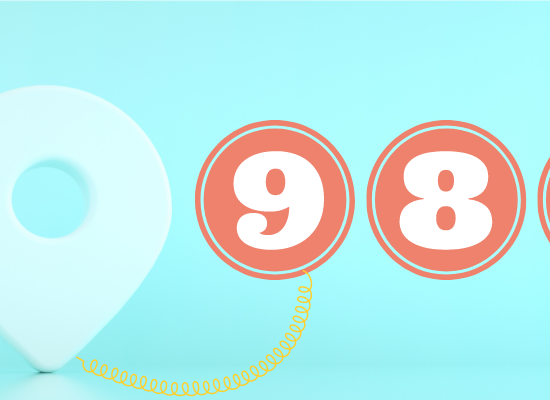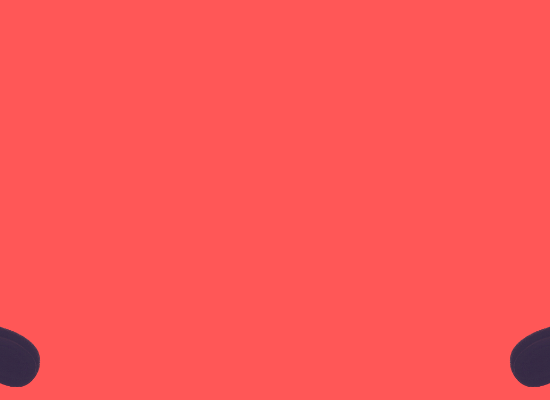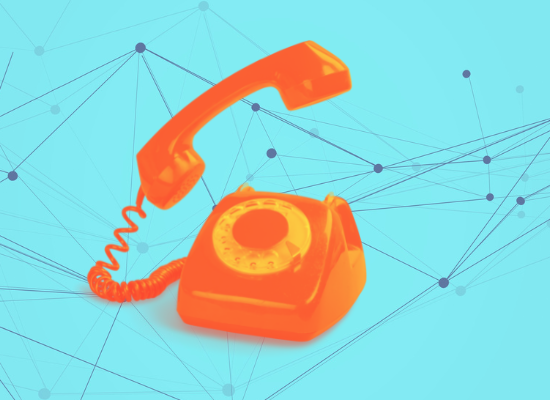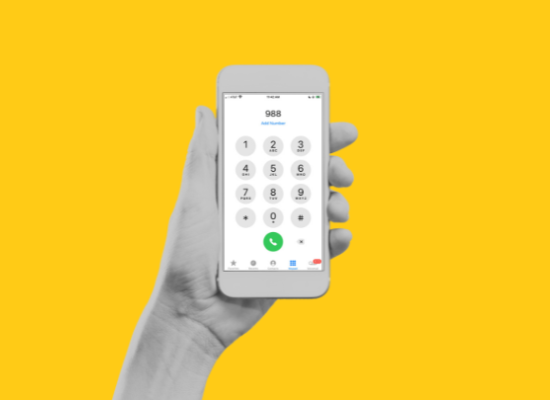
Stephanie Hepburn is a writer in New Orleans. She is the editor in chief of #CrisisTalk. You can reach her at .
Some people can take the worst of a situation and create what they need to help themselves get through it. Among them is Hayley Winterberg. She was 12 and living in Maricopa County, Arizona, when she experienced a suicidal crisis. After the hospital discharged her, Hayley found few mental health or substance use disorder services or supports for children and adolescents. “Hospital staff basically told me, ‘Here are some meds, here’s some counseling—good luck!’” she says. “That was disappointing.” So in 2008, at 13 years old, Hayley partnered with the local National Alliance on Mental Illness (NAMI) and later Magellan Health to create youth-led support groups. She co-founded Magellan Youth Leaders Inspiring Future Empowerment—called MY LIFE, a program for young people ages 13 to 23 who’ve navigated mental health or substance use challenges. Today, Hayley is the executive director at Arizona Peer and Family Career Academy.
When she was 12, Hayley moved in with her mother. Before that, she lived with her father. “I grew up in a domestic violence situation,” she says, “and, at the time, was navigating the justice system because he assaulted me.” Although two years younger than her peers, Hayley excelled socially and academically at school. “My family life was exploding, it had always been toxic, but I loved school and did cheerleading and soccer.” However, she soon found herself on the brink of expulsion. “I was on the precipice of losing my one safe place, which is horrifying to a kid.”
Unfortunately, Hayley’s experience isn’t unique. Schools have historically defaulted to discipline—detention, suspension, expulsion, or police—instead of care for children and adolescents experiencing behavioral health challenges. Also, young people might not feel comfortable sharing their trauma history and issues they’re facing with teachers and administrators or may not be aware of how it’s affecting their behavior.
During the expulsion process, Hayley said to her mother one morning, “I won’t be here when you get home.” Her mom asked, “What does that mean?” At first, she thought Hayley planned to run away, but when Hayley responded, “It doesn’t matter,” a red flag rose. Her mother, who worked in mental health, promptly took Hayley to Phoenix’s Children’s Behavioral Center.
Hayley calls the time she spent in inpatient hospitalization the worst experience of her life. “I didn’t feel heard, and they didn’t create a safe space for me to talk about what was really going on.” She says it contributed to a misdiagnosis. “They didn’t know the chaos in my home life, which meant they didn’t understand what resulted from trauma and environment and what was caused by actual behavioral health conditions.”
The lack of inclusion meant Hayley couldn’t share her history or give input. She points out that the mental health professionals at the hospital spent hours speaking with her parents while only speaking with her for minutes. “I later requested my records, and much of what my parents shared wasn’t accurate.” Her parents shared their impressions of what Hayley was going through, information she could have corrected had they included her in the conversation. “They were talking to my parents about me instead of talking to me,” she says.
Hayley says she didn’t gain coping skills or hear stories of hope at the hospital. “I did nothing but color and read,” she laughs. “I don’t know how that helps someone start their journey of recovery and wellness.” “The focus wasn’t on getting me better but, ‘Hey, you can’t kill yourself here.’” Also, no one at the hospital spoke with Hayley about her diagnosis, which she found jarring. She’d watched family members cycle in and out of mental health crises, so a diagnosis without discussion on hope and recovery felt terminal. “I saw loved ones be in their darkest of days and not recover or find a way out,” she says. “It’s the cycle of the system. So, when they diagnosed me, I thought, ‘Okay, my life is over.’”
Leaving the hospital was equally confusing. It took a long time for Hayley to get an appointment with a psychiatrist, resulting in a lapse in medication and treatment. To help fill in the gap, her mother began taking Hayley to adult support groups, but that wasn’t a great fit either. “We ended up getting kicked out,” she says. The adults worried about the content shared in the group and whether it was appropriate for a 13-year-old. “I’d been exposed to a lot, so nothing they said shocked me, but they told my mom I could no longer be part of the support group.”
Without a place to go, Hayley began thinking about the lack of youth-led supports. She started attending community meetings with her mother. People would share local mental health innovations, but none focused on children or adolescents. “I’d ask, ‘Why don’t we have programs like this for kids?’” The local NAMI president responded, “You’re right—let’s change that.” In 2008, Hayley partnered with NAMI, and later Magellan Health, to develop MY LIFE. “We put together fliers inviting young people—it said something like, ‘Come meet us, and we’ll provide pizza.’”
The first meeting was small—at first, 13-year-old Hayley was terrified to lead it. However, she’d seen her mother run support meetings and felt determined to create a space where young people could go and thrive. The program quickly grew. “At its peak, we had 13 chapters across five states.” It even hosted a music, art, and entertainment festival to raise awareness on mental health, substance use, foster care, and juvenile legal system challenges youth face.
As state and community leaders redesign and implement their 988 crisis systems, Hayley says state and community leaders must consider youth-led supports. “Young people know better than anyone else what’s going to work for them.” She shares that person-led care is proven effective and gives young people a sense of empowerment and allows them to develop skills that help them in adulthood. “Because of my experience with MY LIFE, I could put together a massive event in my sleep,” she says. “Over the past few years, I single-handedly put on two youth young adult conferences.”
However, Hayley warns that token inclusion won’t suffice. “Youth must have a meaningful voice at the table.” That means not only listening to and involving young people in decisions about their care but also getting their input on system development that affects them and their peers. “Young people are often left out of the dialogue because parents and caretakers are the guardians and decision-makers, but they’re not in that young person’s head. Likely, things are happening that the parents and clinician don’t know about.”
Navigating the crisis system has shown Hayley how vital it is to have a robust and well-connected crisis system. “I’ve had negative experiences but also really supportive ones through our crisis line and mobile teams,” she says. “If we can intervene and connect someone with true care in the community, and follow up with them to ensure their safety and wellness, then they can remain in the community, not miss school, and get better.”
Hayley highlights that adults often underestimate and infantilize young people, especially those struggling with mental health or substance use challenges or marginalized by the systems meant to protect them. “They default to thinking kids can’t handle tough topics and conversations—but they forget they already are.”









